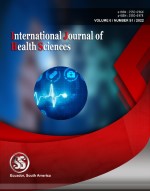Inquiry learning-An effective E learning approach for knowledge retention
Keywords:
E-learning, inquiry based learning, lecture based learning, medical education, problem based learningAbstract
Background: COVID-19 pandemic has given pace to the existing E-learning methods in medical education. Prerecorded video lectures (LL) and online inquiry learning (IL) are two online teaching learning methods. In online recorded classes, more of a teacher centric learning happens. Inquiry learning, a problem based learning method, the learning process is student centric. It is important to find out which one of these virtual approaches to teaching and learning is having a better outcome to plan the delivery of academic contents more effectively.Aim and Objective: To determine whether online inquiry based learning or lecture based learning is more effective education method in Phase 1 MBBS students. Materials and Methods: The study was conducted in 100 students from phase 1 MBBS who gave written informed consent. They had undergone LL and IL for three sets of topics in Physiology of equal difficulty level each. Knowledge acquisition and retention of knowledge by each method were assessed by multiple choice tests conducted soon after intervention and two weeks later and the marks were analyzed using independent student T test.
Downloads
References
Gormley GJ, Collins K, Boohan M, Bickle IC, Stevenson M. Is there a place for e-learning in clinical skills? A survey of undergraduate medical students’ experiences and attitudes. Med Teach. 2009 Jan;31(1):e6–e12.
Paechter M, Maier B, Macher D. Students’ expectations of, and experiences in e-learning: Their relation to learning achievements and course satisfaction. Comput Educ. 2010;54(1):222–229.
Santos GN, Leite AF, Figueiredo PT, et al. Effectiveness of E-Learning in Oral Radiology Education: A Systematic Review. J Dent Educ. 2016; Sep;80(9):1126–1139.
Jang, H.W., Kim, KJ. Use of online clinical videos for clinical skills training for medical students: benefits and challenges. BMC Med Educ.2014; 14, 56 .
Brockfeld T, Müller B, de Laffolie J. Video versus live lecture courses: a comparative evaluation of lecture types and results. Med Educ Online. 2018;23(1):1555434.
National Research Council. Inquiry and the National Science education Standards: A Guide for Teaching and Learning .Washington, D.C: National Academy Press; 2000.
Lee V S. Teaching and Learning Through Inquiry: A Guidebook for Institutions and Instructors. Sterling, Va: Stylus Pub; 2004.
Korkman N, Metin M. The Effect of Inquiry-Based Collaborative Learning and Inquiry-Based Online Collaborative Learning on Success and Permanent Learning of Students. J.Sci.Learn.2021;4(2):151-159.
Bayram Z, Oskay O, Erdem E, Özgür SD, Şen S. Effect of Inquiry based Learning Method on Students’ Motivation.Procedia - Social and Behavioral Sciences. 2013 ; 106:988-96.
Gijbels D, Dochy F, Van den Bossche P, Segers M. Effects of Problem-Based Learning: A Meta-Analysis From the Angle of Assessment. Review of Educational Research. 2005;75(1):27-61.
Stewart KS , Gyles P,Shore B M, Bracewell R. Student outcomes in inquiry: students’ perspectives. Learning Environ Res.2015; 18(2):289-311.
Zhang F, Zhao L, Zeng Y, Xu K, Wen X.Nurse Educ Today. 2019 Aug;79:86-91.
Maria Vlassi , Alexandra Karaliota. The comparison between guided inquiry and traditional teaching method. A case study for the teaching of the structure of matter to 8th grade Greek students. Procedia - Social and Behavioral Sciences .2013;93: 494 – 97.
14.Shymansky, J., Hedges, L., and Woodworth, G.A Reassessment of the Effects of Inquiry-Based Science Curricula of the 60’s on Student Performance. J. Research in Science Teaching.1990;27(2):127–144.
Dean D, Kuhn D. Direct instruction vs. Discovery: The long view. Science Education. 2007; 91. 384 - 397.
Markant D. B., Ruggeri A., Gureckis T. M., Xu F. Enhanced memory as a common effect of active learning. Mind, Brain, and Education.2016 Sep;10 (3 ) :142-152
Published
How to Cite
Issue
Section
Copyright (c) 2022 International journal of health sciences

This work is licensed under a Creative Commons Attribution-NonCommercial-NoDerivatives 4.0 International License.
Articles published in the International Journal of Health Sciences (IJHS) are available under Creative Commons Attribution Non-Commercial No Derivatives Licence (CC BY-NC-ND 4.0). Authors retain copyright in their work and grant IJHS right of first publication under CC BY-NC-ND 4.0. Users have the right to read, download, copy, distribute, print, search, or link to the full texts of articles in this journal, and to use them for any other lawful purpose.
Articles published in IJHS can be copied, communicated and shared in their published form for non-commercial purposes provided full attribution is given to the author and the journal. Authors are able to enter into separate, additional contractual arrangements for the non-exclusive distribution of the journal's published version of the work (e.g., post it to an institutional repository or publish it in a book), with an acknowledgment of its initial publication in this journal.
This copyright notice applies to articles published in IJHS volumes 4 onwards. Please read about the copyright notices for previous volumes under Journal History.
















